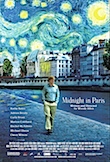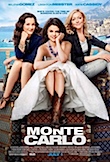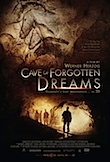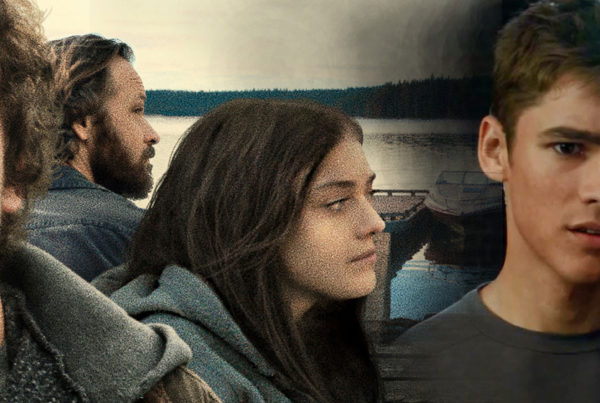 I don’t know what the French did to be so roundly insulted at the movies this week but I’d advise them to steer clear of Wellington cinemas for a while – perhaps until their film festival gets under way again next year. Firstly, crass action auteur Paul W.S. Anderson (Resident Evil) attempts to reboot a franchise from one of France’s most cherished pieces of literature but then makes The Three Musketeers without a single French person appearing on screen.
I don’t know what the French did to be so roundly insulted at the movies this week but I’d advise them to steer clear of Wellington cinemas for a while – perhaps until their film festival gets under way again next year. Firstly, crass action auteur Paul W.S. Anderson (Resident Evil) attempts to reboot a franchise from one of France’s most cherished pieces of literature but then makes The Three Musketeers without a single French person appearing on screen.
Actually, I’m teasing a little as neither the 1993 Charlie Sheen version or the 1973 Oliver Reed one had any significant French involvement, but to populate the latest film with Danes (Mads Mikkelsen), Austrians (Christoph Waltz), Germans (Til Schweiger) and Ukrainians (Milla Jovovich) does seem a bit on the nose.
Anderson takes the bones of Dumas’ original classic story – honourable swordsmen fighting to protect a king so naïve he barely comprehends the threats against him – and adds some monstrous science-fiction elements like giant airships duelling in the skies over Paris. In fact, there is considerable reliance on firearms rather than swordplay which I suspect is because Anderson isn’t quite good enough as a director to bring it to life. He’s much more comfortable with explosions.
The movie chooses not to rely on star power for its marketing which is for the best as the Musketeers are a fairly bland bunch – I once described Matthew McFadyen (In My Father’s Den) as “doughy” in these pages and he doesn’t appear to have been doing much work in the gym subsequently. If you absolutely must go and see The Three Musketeers then trade up to the 3D version. Anderson gets the medium better than most action directors and there are moments when he uses it well here.
 While Paris is abused in The Three Musketeers (one of Anderson’s airships is impaled on the famous La Saint-Chapelle), Woody Allen attempts to write it a love letter in the latest chapter of his European adventures, Midnight in Paris. Owen Wilson plays a discontented screenwriter on holiday with his fiancée (Rachel McAdams) and her parents. He wants to live and write in the inspirational city and be a serious novelist but she would rather he continue his Hollywood hackwork and build their dream house on the Malibu beach.
While Paris is abused in The Three Musketeers (one of Anderson’s airships is impaled on the famous La Saint-Chapelle), Woody Allen attempts to write it a love letter in the latest chapter of his European adventures, Midnight in Paris. Owen Wilson plays a discontented screenwriter on holiday with his fiancée (Rachel McAdams) and her parents. He wants to live and write in the inspirational city and be a serious novelist but she would rather he continue his Hollywood hackwork and build their dream house on the Malibu beach.
At a loose end one night he goes for a walk, gets lost and through some kind of magical time portal (or a bump on the head) he finds himself in the middle of Paris in the 20s – full of bonhomie, joie de vivre and artists and writers soaking up the scene. None of whom are French. Still, thanks to Papa Hemingway he meets Gertrude Stein who gives him some tips for his book and introduces him to a fledgling fashion designer (and Picasso-muse) played by Marion Cotillard.
If late-period Woody Allen films seem effortless it’s probably because not much effort actually goes in to them – like Eastwood he has been around movie sets long enough to know how to finish on time every day – but Midnight in Paris has more charm than most while continuing to indulge Allen’s usual obsessions. Of all the Allen-proxies we have seen (most recently Larry David in Whatever Works) Wilson is the most natural – merging his affable persona with Allen’s stuttery cynicism.
 The greatest insult that befalls the French this week, though, is the truly awful teen-girl-wish-fulfilment-fantasy Monte Carlo in which a young Texan (Selena Gomez) gets a trip to Paris as a high school graduation present and her grumpy step-sister and blousy BFF tag along for the ride. There we get to see the same Parisian tourist traps as Allen photographed for Midnight in Paris, before Gomez gets mistaken for a wealthy British society-gal and is spirited down to Monaco to live the high life for a few days.
The greatest insult that befalls the French this week, though, is the truly awful teen-girl-wish-fulfilment-fantasy Monte Carlo in which a young Texan (Selena Gomez) gets a trip to Paris as a high school graduation present and her grumpy step-sister and blousy BFF tag along for the ride. There we get to see the same Parisian tourist traps as Allen photographed for Midnight in Paris, before Gomez gets mistaken for a wealthy British society-gal and is spirited down to Monaco to live the high life for a few days.
There are actually French characters in Monte Carlo but they are almost all either snobs, slobs or buffoons. I expect the makers got away with this by shooting most of the film in Hungary (a common 20th Century Fox money saving approach). Like a teen version of Sex and the City, Monte Carlo manages to insult everything it touches – including my eyeballs.
 Cave of Forgotten Dreams is this week’s opportunity to experience something genuinely life-affirming – genius Werner Herzog at his idiosyncratic best. Buried deep inside the hills of the Ardèche are the earliest human cave paintings yet discovered, a record of the birth of human consciousness, self-awareness and sprituality from more than 30,000 years ago. So precious that they are only opened up to scientists for a couple of weeks a year, Herzog took a tiny crew underground to film these extraordinary artworks with modern, hand-held 3D cameras.
Cave of Forgotten Dreams is this week’s opportunity to experience something genuinely life-affirming – genius Werner Herzog at his idiosyncratic best. Buried deep inside the hills of the Ardèche are the earliest human cave paintings yet discovered, a record of the birth of human consciousness, self-awareness and sprituality from more than 30,000 years ago. So precious that they are only opened up to scientists for a couple of weeks a year, Herzog took a tiny crew underground to film these extraordinary artworks with modern, hand-held 3D cameras.
But, like any Herzog film, what it’s about isn’t really what it’s about. He’s interested in the paintings, of course, but he’s also fascinated by the people who study them and whether their particular obsessions mirror those of the artists from millennia ago. And those of the unknowable future. For this confirmed atheist, to watch Cave of Forgotten Dreams was to feel the presence of something bigger than us. Not a God that doesn’t exist of course but … something. Something that I can’t quite, and not sure I want to, put my finger on.
 Finally, from essence to triviality: Errol Morris’ new documentary Tabloid about the eccentric former model and mormon-missionary-kidnapper Joyce McKinney. In the past, Morris has used his superb interviewing skills to uncover some astounding truths about our recent history (The Fog of War in 2003 and Standard Operating Procedure in 2008) but for all the prurient interest there might be in Ms McKinney’s strange and fairly self-obsessed life Morris fails to transcend the sad and sordid original material and ends up doing not much more than exploiting the poor woman – just like the British tabloids he’s supposed to be exposing.
Finally, from essence to triviality: Errol Morris’ new documentary Tabloid about the eccentric former model and mormon-missionary-kidnapper Joyce McKinney. In the past, Morris has used his superb interviewing skills to uncover some astounding truths about our recent history (The Fog of War in 2003 and Standard Operating Procedure in 2008) but for all the prurient interest there might be in Ms McKinney’s strange and fairly self-obsessed life Morris fails to transcend the sad and sordid original material and ends up doing not much more than exploiting the poor woman – just like the British tabloids he’s supposed to be exposing.
Printed in Wellington’s Capital Times on Wednesday 19 october, 2011.
Notes on screening conditions: The Three Musketeers looked good in 3D at Wellington’s new Roxy Cinema in Miramar; Midnight in Paris was a tired looking 35mm in Cinema 3 at the Lighthouse in Petone, Monte Carlo was an even tireder 35mm print at Readings, Cave of Forgotten Dreams was the gala opening night screening at this year’s Wellington Film Festival; Tabloid was a slightly-less-than-HD digital file in the Bergman screening room at the Paramount.


